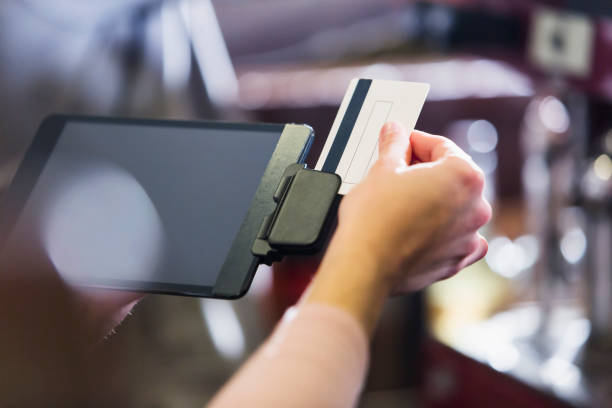How Restaurants Can Handle Gift Card Revenue Without Losing Sleep
You know what? Gift cards are more than just a shiny slip of paper in a wallet or a little digital rectangle in an email. They’re a promise—a future meal, a night out, a shared experience. But for small restaurant owners, they can also be a bit of a headache when it comes to the books. Gift card revenue isn’t like your regular cash sales; it’s money that’s sitting there, waiting for redemption. And if you’re not careful, it can make your financial statements look… well, messy.
Why Gift Cards Can Be Tricky
Ever wondered why your revenue reports don’t quite line up with what’s actually in the till? That’s often the result of deferred revenue. When a guest buys a gift card, the cash hits your account immediately—but technically, you haven’t “earned” it yet. Until that card is redeemed for food or drink, it’s a liability, not revenue. It’s one of those quirks of accounting that can trip up even seasoned operators.
Here’s another wrinkle: partially used cards. Say someone buys a $50 gift card but only redeems $30—do you recognize the full $50, or just the $30? Missteps here can make your income statement look confusing and your bank balance misleading. And here’s the kicker: if your team isn’t tracking redemptions carefully, you might recognize the revenue too early, or worse, forget about partially used cards. Those little oversights add up—and suddenly, your cozy bistro looks like a financial puzzle.
Tracking Gift Card Revenue: A Few Practical Steps
Here’s the thing—you don’t have to reinvent the wheel. With a little planning, tracking gift card revenue can be surprisingly straightforward.
-
Integrate your POS system: Most modern systems, like Toast, Square, or Lightspeed, have built-in tracking for prepaid cards. Make sure redemptions and balances flow directly into your accounting software.
-
Separate ledger entries: Treat gift cards as liabilities until redeemed. That way, your balance sheet reflects reality, not wishful thinking.
-
Monitor expirations and partial redemptions: Someone may use $25 of a $50 card; it’s important to account for the remaining balance correctly.
-
Use reports wisely: Many POS platforms let you pull reports of outstanding balances, partially used cards, and redemption patterns. Checking these regularly can save a lot of headaches.
Honestly, it’s a bit like keeping tabs on party favors—you know exactly what’s been handed out, what’s left, and who owes you a follow-up.
Avoiding Common Pitfalls
The accounting rules, like ASC 606, dictate the timing of revenue recognition. If your records show gift card sales as immediate revenue, you might run into compliance issues—or at the very least, an uncomfortable conversation with your accountant.
Other traps include:
-
Promotions or bundled deals: Customers using gift cards with discounts can muddy the waters.
-
Expired or lost cards: Some states allow you to recognize revenue after expiration; others don’t. Knowing the rules is key.
-
Third-party gift card platforms: Using a third-party gift card provider can complicate timing, especially if settlements take a few days to process.
It sounds bureaucratic, but with clear policies, it’s actually manageable. And you know what? Once you get into the rhythm, it becomes second nature—like running a busy Friday night dinner service without breaking a sweat.
It’s About More Than Just Numbers
You might be thinking, “It’s just a few hundred bucks here or there—why sweat it?” But tracking gift card revenue carefully has benefits beyond bookkeeping. It gives you insight into customer behavior: who’s buying, who’s redeeming, and which promotions are actually effective. You might notice, for example, that gift card redemptions spike around holidays, or that certain marketing campaigns bring in more repeat visits than others.
Plus, accurate accounting fosters trust. Customers want to know their gift card will work when they show up hungry and excited—and so do your investors or lenders. A clean, accurate set of books reflects professionalism, and frankly, it makes life a lot easier if you’re ever looking for financing, expanding, or selling your business.
Quick Wins for Small Restaurants
Even if you’re running a tight crew with limited hours, there are small steps that make a big difference:
-
Monthly reconciliations: Don’t wait until year-end to check your gift card liability.
-
Track partially used cards: It prevents lost revenue from slipping through the cracks.
-
Leverage software features: Most POS systems can generate easy reports; take advantage.
-
Train staff consistently: Make sure every server knows to check balances and update the system. A little training upfront saves confusion later.
You don’t need to overcomplicate things—just keep a rhythm, and your books will thank you.
Take Control Without Overthinking It
Gift card revenue recognition for restaurants isn’t rocket science. It’s more like keeping a tidy kitchen: a little attention, some smart systems, and a bit of consistent effort. Once you get the hang of it, you’ll see the patterns, avoid surprises, and maybe even discover some marketing insights you didn’t notice before.
So the next time someone buys a gift card, you can relax knowing your accounting isn’t going to turn into a scramble. Treat those cards as what they really are: promises of good times ahead—both for your customers and for your restaurant’s bottom line.

